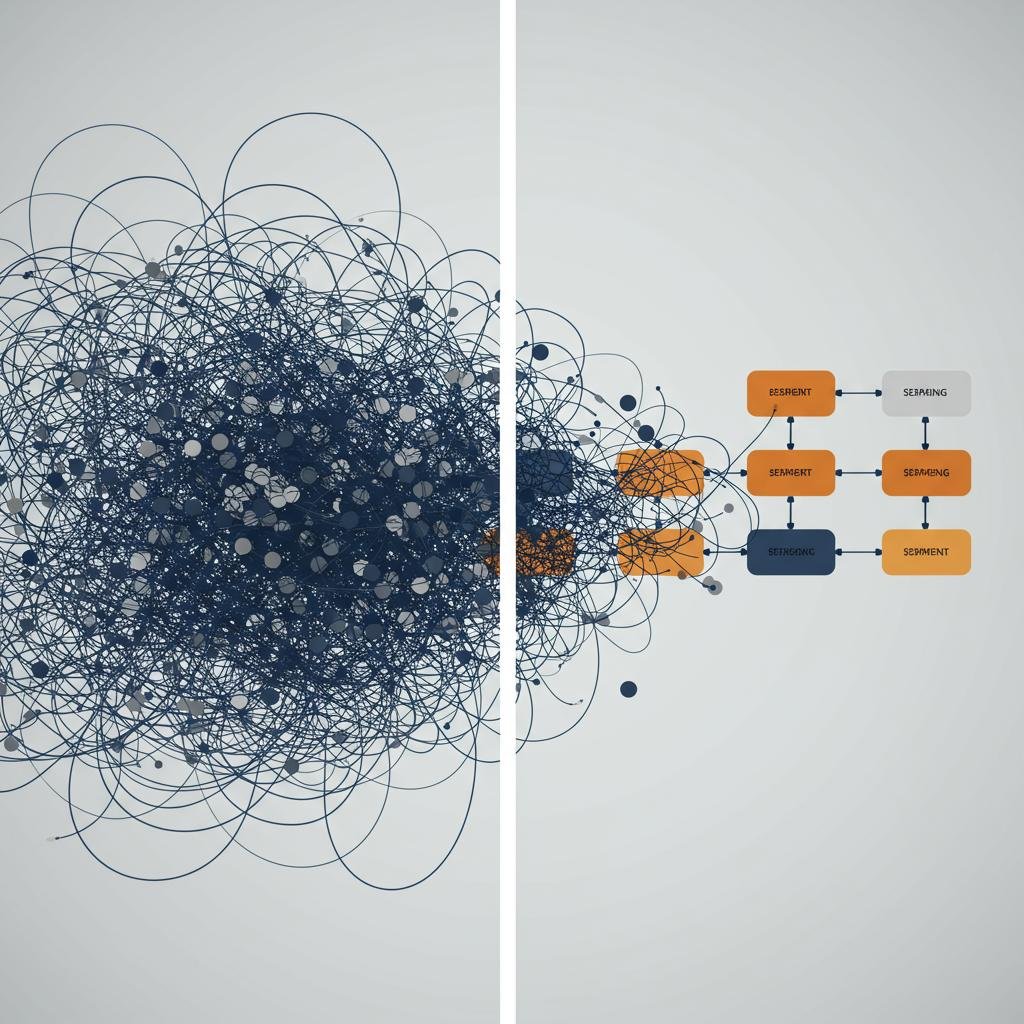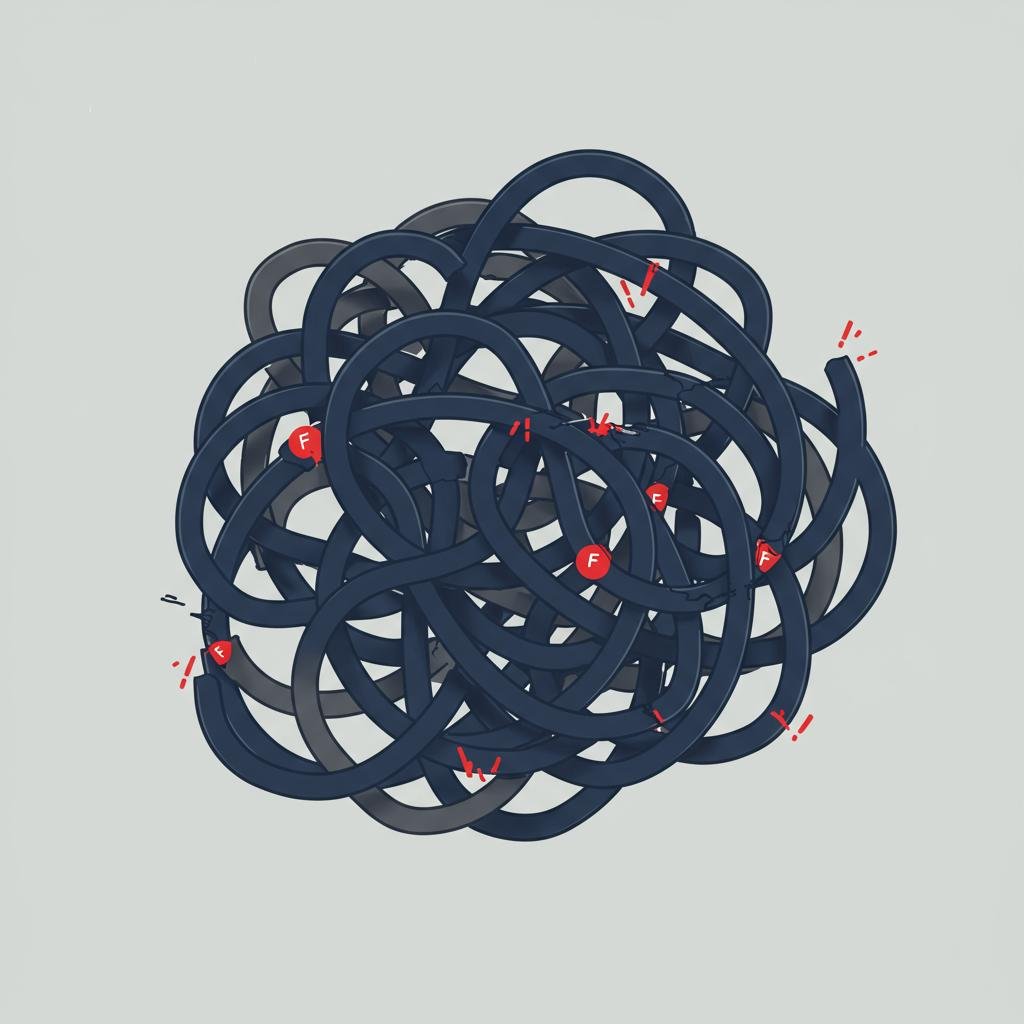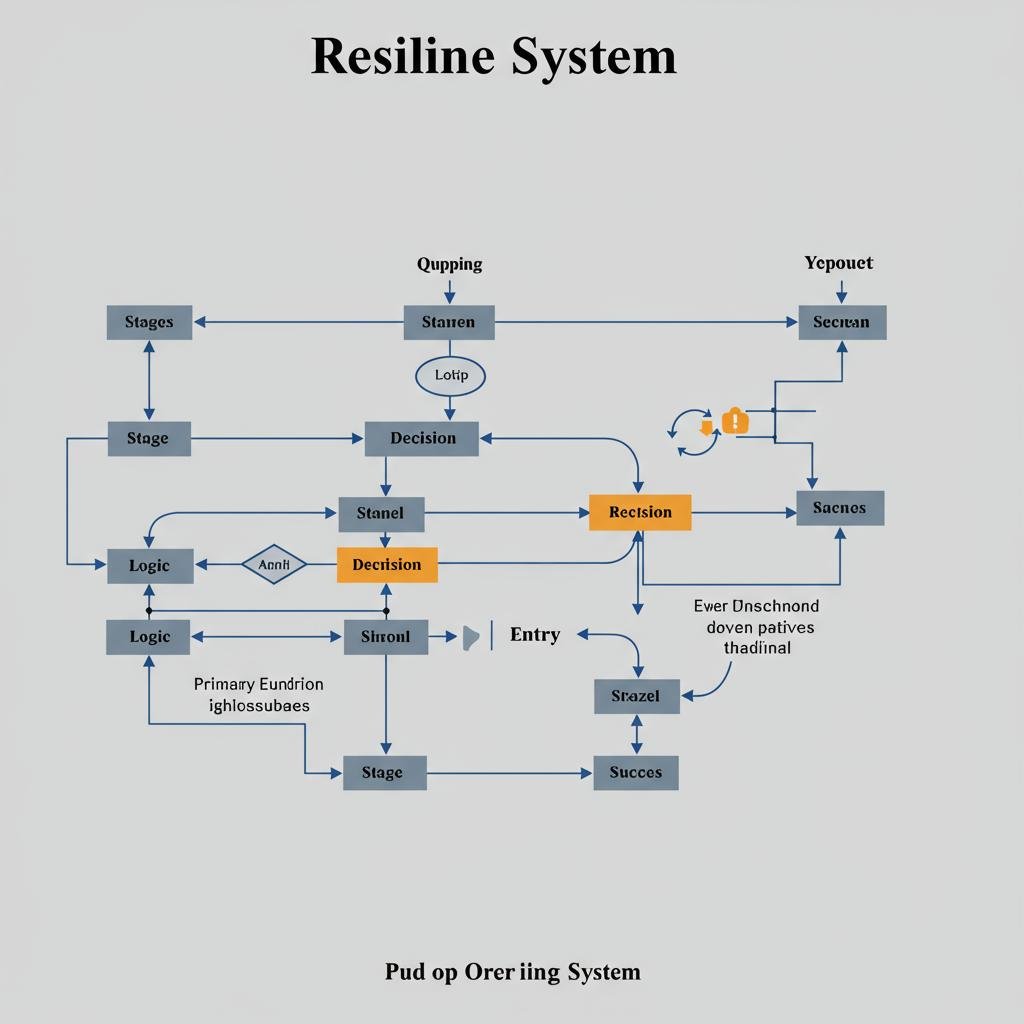From Tasks to Systems: The Mindset Shift Your Automation Strategy Is Missing
July 16, 2025

This post challenges business leaders to move beyond simple, task-based automation tools that create complexity and fragility. We explore the critical mindset shift to systems-thinking, arguing that true, scalable efficiency requires a developer-led, architectural approach. This positions Azlo.pro as the strategic partner for building robust, custom automation systems that solve core business problems, rather than just connecting apps.
Your ‘Time-Saving’ Automations Are Costing You Time. Here’s Why.
You started with a simple goal: automate a repetitive task. You connected two apps, and it worked—a small victory. Then you added another, and another. Now, you’re managing a tangled web of triggers and actions that’s fragile, hard to debug, and groaning under the weight of your growing business. You’ve hit the complexity ceiling. The problem isn’t the desire to automate; it’s the approach. Relying on off-the-shelf tools for task-level fixes inevitably leads to technical debt. To truly scale, you need a mindset shift: from automating isolated tasks to architecting resilient business systems. This is the difference between applying a band-aid and engineering a true operational backbone.
The Automation Paradox: When ‘Connecting Everything’ Breaks Everything
The initial allure of no-code automation tools is undeniable. They promise quick wins, and the satisfaction of connecting App A to App B to solve an immediate pain point is powerful. However, as you stack these point-to-point solutions, you inevitably reach the “complexity ceiling”—the point where the number and fragility of your automations create more management overhead than they save.
This creates a brittle system. Its anatomy is defined by silent failures where data stops flowing without warning, a tangled mess of complex dependencies where changing one step has unknown consequences, and a complete lack of version control. The simple act of updating a single business process becomes a nightmare of untangling and re-testing dozens of individual, interconnected automations.

Ultimately, this task-based approach doesn’t scale because it is fundamentally reactive, not strategic. These tools are built for simple data handoffs, but they can’t handle the complex conditional logic, robust error handling, or high-volume processing required for core business operations.
The Systems Mindset: Moving From Tinkerer to Architect
To break through the complexity ceiling, you need a profound mindset shift. You must stop asking, “What small task can I automate?” and start asking, “What core business process can I systematize?” This moves you from a tool-first approach to a problem-first approach. The goal is no longer just to pass data between apps, but to design an elegant, end-to-end solution for a critical business outcome, like client onboarding or order fulfillment.
This begins by mapping the entire process from start to finish. Before a single line of code is written or an automation is configured, you must understand the complete flow of information, all the decision points and potential exceptions, and the ultimate business goal.
This shift in perspective elevates you from a reactive tinkerer, constantly plugging leaks, to a proactive architect of your business’s efficiency. You begin laying a solid foundation for future growth instead of building a trap of technical debt.
Building for Resilience: Why Your Next Step Requires a Developer-Led Approach
Real-world business processes are rarely simple triggers and actions. They require sophisticated conditional logic, complex data transformation, and deep integration with custom databases or internal tools—capabilities that lie beyond the scope of most no-code platforms. This is where a developer-led approach becomes essential.
To handle mission-critical automations at scale, you need production-ready technology. This means relying on robust, high-performance platforms, often built on languages like Go or Rust, that are designed for complexity and reliability. Furthermore, a true system is architected for failure. It includes comprehensive error handling, detailed logging for easy debugging, and proactive monitoring to catch issues before they impact the business. These are features that are often afterthoughts or entirely missing from simpler tools.

This is the core value of a developer-led ‘Zapier alternative’ like Azlo.pro. We don’t just connect apps; we engineer resilient, custom-fit systems that are built to last. These systems become a true competitive advantage, not a source of constant maintenance.
The Payoff: True Scalability and Operational Freedom
When your core processes are properly systematized, the benefits are transformative. Your business can scale predictably and confidently, knowing that your operational backbone can handle increased volume without piling on more manual work or breaking under the strain.
This approach frees your most valuable resource—your team’s brainpower—from fighting fires and managing brittle automations. Instead, they can focus on high-value work like growth, strategy, and innovation. You gain a significant competitive edge through superior operational efficiency and reliability that your competitors, stuck in the task-automation trap, simply cannot match.
The final outcome is an automated operational engine that is a powerful business asset, not a fragile liability.
Moving from tasks to systems isn’t just a new tactic; it’s a fundamental evolution in how you approach operational efficiency. The fragile web of automations that got you here won’t get you to the next level of growth. By adopting a systems mindset and partnering with a team that can architect and build robust, developer-led solutions, you can move beyond the complexity ceiling and create a truly scalable, resilient business. If you’re ready to stop tinkering and start architecting, we can help.